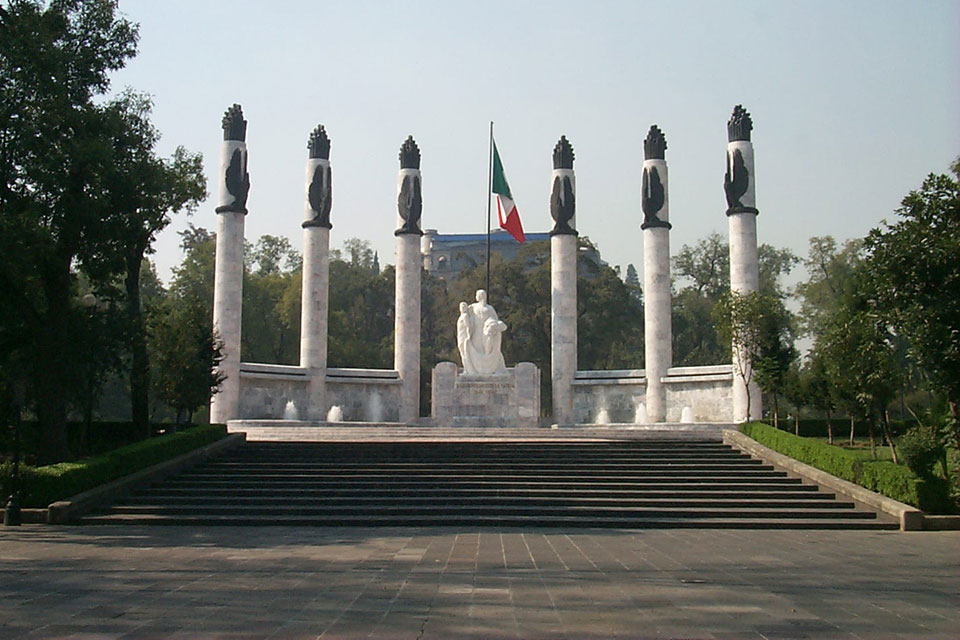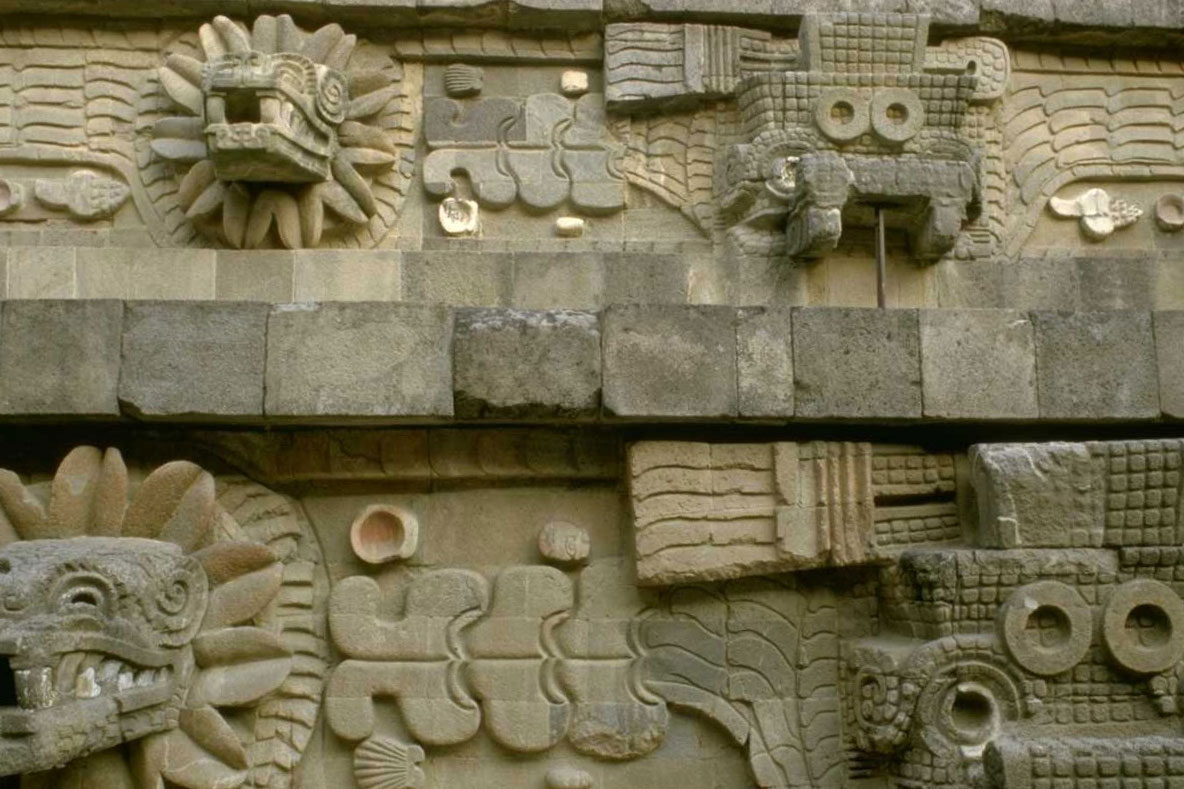A visit to Mexico City would be incomplete without a look at the Zocalo, the heart of the city since the Aztecs’ rule. At the time of Moctezuma I this area was surrounded by palaces and temples, now it’s the second largest public square in the world (after the Red Square in Moscow). It’s official title is the Plaza de la Constitucion; the word ‘zocalo’ means base or plinth and arose after a monument to Independence in the square was constructed only to that stage – then the name stuck.
You can gain a good understanding of Mexico’s history and culture in this square alone, from the Templo Mayor – ruins of the Great Temple of Tenochtitlan – to the Cathedral built on the site razed by Cortés, and then Diego Rivera’s murals of the struggle for independence on the walls of the National Palace.
Tenochtitlán
AD 1325 the wandering Mexica tribe known to us as the Aztecs founded their great city of Tenochtitlán. According to legend, they had been told by the gods to build their city in the spot where an eagle, perched on a cactus, would be seen eating a snake. The symbols were found in an region of lakes and islands, the area that would become today’s Mexico City.
Despite the drawbacks of the marshy, snake infested land, Tenochtitlán flourished. The Aztecs used irrigation to grow crops throughout the year and made ‘floating gardens’ by filling shallow areas of the lake and anchoring the soil with trees. They built extravagant palaces and a structured city, with canals forming part of the defense system. As their city grew stronger the Aztec warriors extended their powers over neighboring territories, gaining tribute payments and most importantly, human hearts for sacrifice.
The Aztecs believed that it was necessary to feed the gods with human hearts in order to ensure that the sun would rise every day. It was important in battle to seize as many live prisoners as possible, these unfortunate victims would then be held captive until they were required for sacrifice. Then priests would rip their hearts out of their bodies, still beating, and throw the bodies down the steps of the temples.
Human sacrifice was actively practised when Cortés arrived at Tenochtitlán, and this contributed towards his desire to raze the city. On the site of each flattened temple, he resolved to build a church. Today the remains of Tenochtitlán lie beneath the foundations of Mexico City. The site of the great temple, Templo Mayor, lies adjacent to the Cathedral and has been excavated, but many more Aztec ruins lie buried forever.
The Cathedral
Having destroyed the Aztec temples here, Cortés ordered the construction of a church on the same spot. In 1573 the church was demolished and work began on the Cathedral itself, intended to resemble its equivalents in Toledo and Granada. It was consecrated, still incomplete, in 1667 and the final touches – the two bell towers and central dome designed by Manuel Tolsa – were finished in 1813. The adjoining Sagrario, parish church for the area, was built from the local red tezontle stone in the 1700s and is equally impressive with its Churrigueresque façade.
Venture inside the Cathedral and you’ll be saddened by the immense scaffolding that nearly obliterates the beauty of the interior. From the outside it’s plain to see the tilting of the immense structures as they sink into the old lake bed on which Mexico City was founded, and the scaffolding is the price of trying to halt this destruction.
The National Palace
Also initiated by Cortés, the National Palace stands on the site of Montezuma’s castle. Today it is home to the offices of the President (he enters by the gate on the right), the National Archives and the Federal Treasury. Above the central gate is the bell rung by Miguel Hidalgo in 1810 (in Dolores Hidalgo) as he proclaimed his “Grito de Dolores”, declaring Mexico’s independence from Spain. On the anniversary of this event, every 15th September, thousands gather in the square to hear the president repeat the words of the Grito.
Today the Palace is visited not least for the enormous murals by Diego Rivera along the walls of the interior. Passionately depicting the origins of Mexico and its struggle for independence, they read like a history book with the heroes and villains portrayed together in vivid scenes, often violent and disturbing, but very memorable. (Enlist a guide to explain the scenes and point out the characters and you’ll have an in-depth history lesson. Otherwise the ‘Blue Guide’ of Mexico has good descriptions).
Templo Mayor
This is the site of the Great Temple of Tenochtitlan, ancient capital of the Aztecs. Excavations were begun in 1978, when workmen discovered the Coyolzauhqui stone disc, weighing eight tonnes and marking the foot of the stairs of the temple. You can see some of the site from railings around the pedestrianised road to the east of the Sagrario, but it’s better to pay the small entrance fee and walk around the excavations.
We’d recommend visiting the excellent museum before you look around, even though it’s at the end of the marked route. Unusually for Mexico, there are wall-mounted TV screens with video guides of each room in English (and it’s air-conditioned). The actual stone of Coyolzauhqui is in the museum too. Look for the late 15th century replica of a tzompantli or rack of skulls, used to display the heads of sacrificial victims.






